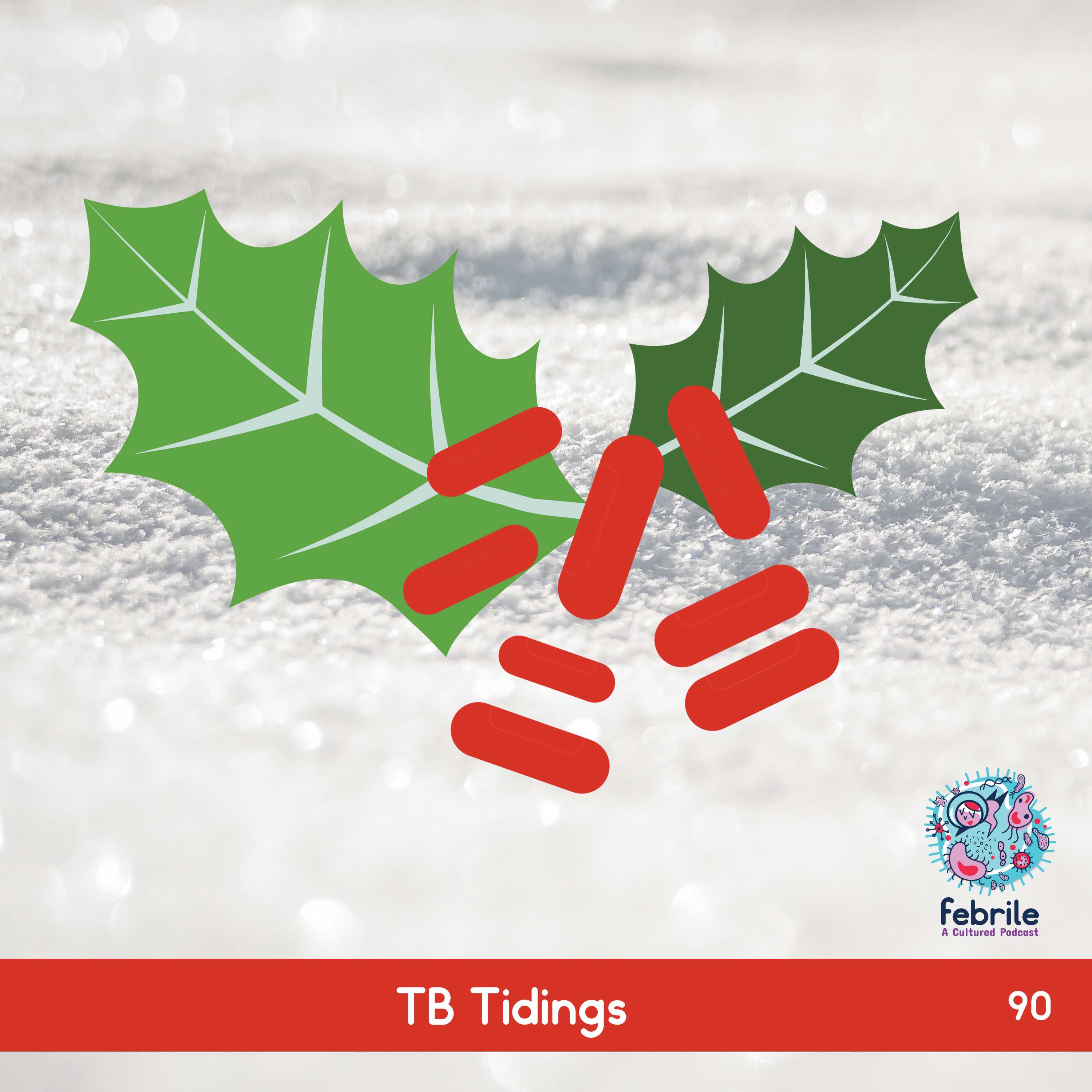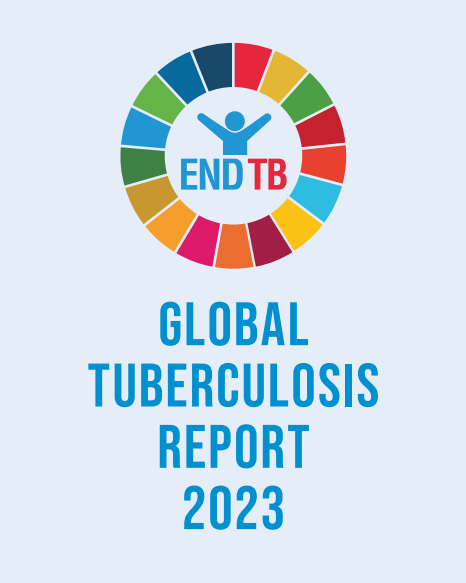Table of Contents
Credits
Hosts: Sarah Silverberg, Sara Dong
Guest: Ian Kitai
Writing: Sarah Silverburg, Ian Kitai, Sara Dong
Producing/Editing/Cover Art/Infographics: Sara Dong
Our Guests
Sarah Silverberg, MD

Dr. Sarah Silverberg is a final year pediatric infectious fellow at the University of Toronto and Hospital for Sick Children (SickKids) in Toronto, Canada. She completed her pediatrics residency at the University of British Columbia and BC Children’s Hospital in Vancouver, and received her MD from the University of Toronto.
Ian Kitai, MB, BCh, FRCP

Dr. Ian Kitai is an Infectious Diseases Physician and Professor of Pediatrics at the University of Toronto and Hospital for Sick Children (SickKids). He trained in Medicine in South Africa, in Paediatrics in the UK, and in Paediatric Infectious Diseases in Toronto. He worked for three years for Oxfam (UK) in rural Zimbabwe and for two years with the Northern Medical Unit of the University of Manitoba. He is currently the TB specialist for SickKids.
Culture
Sarah shared Vulfpeck (band)
Ian mentioned thinking of famous people who died of TB, one of which is George Orwell.
Consult Notes
Case Summary
11 year old boy presenting with fevers, abdominal pain, anorexia, and weight loss – found to have tuberculosis.
Key Points
Epidemiology and impact of tuberculosis in children
- TB disease is caused by Mycobacterium tuberculosis (MTB) complex, which is a group of closely related acid-fast bacilli
- The global burden of TB disease in children is still somewhat unknown and depends on access to diagnostics, clinical care
- The WHO Global TB Report 2023 is available here: https://www.who.int/teams/global-tuberculosis-programme/tb-reports/global-tuberculosis-report-2023
- > 10 million cases of adults and children with TB, and ~1.3 million children (<15 yo) with TB every year (12% of estimated total)
- Concealed cause of childhood mortality: estimated that children account for 16% of global deaths caused by TB among HIV-negative people and 18% of global deaths from TB among people with HIV
Case rates of TB in all ages in North America are higher in urban, low-income areas and in nonwhite racial and ethnic groups
- Ian discussed TB in children in Canada and two discrete groups:
- Foreign born children or children of foreign born parents
- >55% indigenous Canadians (First Nations and Inuit children)
- Morris SK, Demers AM, Lam R, Pell LG, Giroux RJ, Kitai I. Epidemiology and clinical management of tuberculosis in children in Canada. Paediatr Child Health. 2015;20(2):83-88. doi:10.1093/pch/20.2.83
- https://www.canada.ca/en/public-health/services/diseases/tuberculosis/surveillance.html
- Ian also mentioned the importance of travel history and how most disease will develop within 2 years of infection (so travel may be more important/relevant than foreign birth in that case)
- Rayment JH, Guthrie JL, Lam K, et al. Culture-positive Pediatric Tuberculosis in Toronto, Ontario: Sources of Infection and Relationship of Birthplace and Mycobacterial Lineage to Phenotype. Pediatr Infect Dis J. 2016;35(1):13-18. doi:10.1097/INF.0000000000000915
- In the US, most cases of childhood TB are associated with some form of foreign contact of the child, parent, or household member
- Ian discussed TB in children in Canada and two discrete groups:
Clinical Presentations of Pediatric TB
- Many infections caused by MTB in children and adolescents will be asymptomatic
- Pulmonary TB clinical manifestations can include fever, weight loss / poor weight gain, night sweats, cough, chills
- Chest x-rays are rarely specific for TB, but you might see hilar/subcarinal/paratracheal/mediastinal lymph nodes, pleural effusions, interstitial cavities, or miliary pattern infiltrates >> in some cases, CT or MRI chest can further investigate nonspecific or subtle findings
- Cavitation is typical in reactivated TB in adults (and sometimes adolescents), but this is uncommon in childhood TB
- Necrosis and cavitation may result from progressive primary focus in very young or immunocompromised children
- Extrapulmonary disease may include:
- Meningitis
- Granulomatous inflammation of lymph nodes, bones, skin
- GI tract TB can mimic IBD, as Ian discussed
- And more…
- Ian and Sarah discussed TB meningitis in particular
- CNS TB is a big topic, but as a reminder, this can include meningitis, tuberculomas, or spinal arachnoiditis. Check out Febrile #29 – Double Trouble for more on TB meningitis
- To summarize a few notes from Ian this episode:
- He almost thinks of TB meningitis as a separate entity as it is a different sort of disease than bacterial meningitis and can have indolent course
- May present as headache or behavior change, and often takes weeks to make the diagnosis especially in low burden settings
- Hydrocephalus is an important feature
- CT head without enhancement may miss TB meningitis because looking for leptomeningeal enhancement (hallmark of TBM)
- Congenital TB can mimic neonatal sepsis or present with pneumonia +/- hepatosplenomegaly within about 3 months of life
- Check out prior Febrile episode #79 Curious Congenital Conundrums – Mycobacterial Malady if you want to hear more about neonatal TB
- Neonates are at high risk of progression with miliary and meningeal involvement
Important take-home points: How does TB in children differ from that in adults?
Quote from Ian: “TB is the great mimicker of many things. If people ask me, can TB cause ____, I don’t wait for the next word, I usually say yes.”
- There is a high risk of rapid progression and severe TB disease manifestations in young children, especially infants. There is a higher propensity for military and CNS disease in children under 5 years old, especially those under 1 yo
- Diagnosis in young children may be difficult, since signs and symptoms are often nonspecific and disease is often paucibacillary.
- Much of adult and adolescent TB is reactivated pulmonary disease – so can get sputum for diagnosis and use as a marker for success in treatment, which is relatively easier
- TB in young children is often intrathoracic / in lymph nodes and not parenchymal.
- Children with only adenopathy or small pulmonary lesions (paucibacillary disease) and nonproductive cough are not contagious
- There are exceptions of course – Rare cases such as lung cavities or presence of AFB on sputum microscopy and congenital TB can be contagious
- TB disease in a very young child is a sentinel event indicating recent transmission
- It was acquired from someone and there is urgency to find index patient!
TB Diagnostics
- We were focused on diagnosis of active disease in the episode, but as a quick reminder:
- TB infection = MTB infection in person with no symptoms or signs of disease and CXR findings that are normal or reveal evidence of healed infection along with positive TST or IGRA result. This is often called “latent TB infection” or LTBI, although this can be a little misleading
- TB disease = illness in patient with symptoms, signs or radiographic manifestations caused by MTB; can be pulmonary, extrapulmonary, or both
- There are two indirect methods to detect MTB infection: tuberculin skin test and interferon gamma release assays
- Rely on specific lymphocyte sensitization after infection (so conditions that decrease lymphocyte numbers or function can reduce sensitivity of these tests, including severe TB disease!)
- The lack of reaction does not exclude TB infection or disease
- A positive tuberculin skin test (TST): indicates possible infection with MTB complex
- Reactivity appears 2-10 wks after initial infection (median interval 3-4 wks)
- BCG immunization can produce a positive TST result
- A quick review on the interpretation of TST results in children and adolescents:
Induration 5mm or greater | Induration 10mm or greater | Induration 15mm or greater |
|
|
|
- Positive interferon-gamma release assay (IGRA): indicates probable infection with MTB
- Measures IFN-g production from T lymphocytes in response to stimulation with antigens specific to MTB complex, including MTB and M.bovis
- The antigens used in IGRAs are not found in BCG or most pathogen non-tuberculous mycobacteria (are not found in M.avium complex – but found in M.kansasii, M.szulgai, M.marinum)
- Evaluation for MTB disease includes multiple assessments:
- Obtaining history about symptoms of TB disease and exposure to TB
- Physical exam for signs of TB disease
- Chest radiograph and additional imaging as appropriate (such as CT chest, abd/pelvis)
- Sputum or gastric aspirate sampling (or other specimen as appropriate)
- In children under 12 months with suspected TB, experts generally recommend a lumbar puncture to evaluate for TB meningitis. For older children, LP only required if patient has neurologic signs/symptoms
- HIV serology screening is standard of care for all patients with TB
- Isolation of MTB confirms the diagnosis of TB disease
- Samples may be sent for AFB stain and culture from:
- Sputum
- Children older than 2 and adolescents often can produce sputum spontaneously or with induction with aerosolized hypertonic saline
- Gastric aspirate
- If cough is absent or nonproductive or induced sputum unsuccessful, can utilize early morning gastric aspirate
- Pleural fluid
- Bronchial washing
- Cerebrospinal fluid
- Urine and stool
- Other body fluid or tissue biopsy specimen (such as lymph node, mesentery, bone marrow)
- Sputum
- Nucleic acid amplification tests (NAATs) are a rapid molecular method that also considered confirmatory, but need culture isolation to obtain susceptibility testing, genotyping, species identification
- Culture detection can take up to 10 weeks using solid media as MTB is slow-growing
- Liquid media and continuous monitoring systems can allow detection within 1-6 wks (usually within 3 wks)
- Samples may be sent for AFB stain and culture from:
- Even with optimal technique, MTB is isolated from fewer than 75% of infants >> 50% of children are diagnosed by clinical criteria
- Finding the culture-positive source supports a child’s presumptive diagnosis and can provide likely drug susceptibility of their isolate
- Take-homes:
- The most important step if you suspect disease is sampling what you can to confirm diagnosis
- Negative tests of infection (TST or IGRA) do not mean that TB is ruled out
Ian and Sarah discussed how TB meningitis may impact evaluation and management
- TBM is an emergency! Although you want to obtain diagnostics as possible, the most important step is to rapidly start treatment if you have a clinical suspicion
- More on diagnosis specifics such as CSF evaluation at Febrile #29 – Double Trouble
- Adjuvant treatment with steroids would be considered. Corticosteroids have been shown to reduce mortality for TB meningitis, but data is less strong for its ability to reduce morbidity of developmental concerns
- Thwaites GE, Nguyen DB, Nguyen HD, et al. Dexamethasone for the treatment of tuberculous meningitis in adolescents and adults. N Engl J Med. 2004;351(17):1741-1751. doi:10.1056/NEJMoa040573
- Schoeman JF, Van Zyl LE, Laubscher JA, Donald PR. Effect of corticosteroids on intracranial pressure, computed tomographic findings, and clinical outcome in young children with tuberculous meningitis. Pediatrics. 1997;99(2):226-231. doi:10.1542/peds.99.2.226
- Girgis NI, Farid Z, Kilpatrick ME, Sultan Y, Mikhail IA. Dexamethasone adjunctive treatment for tuberculous meningitis. Pediatr Infect Dis J. 1991;10(3):179-183. doi:10.1097/00006454-199103000-00002
- Prasad K, Singh MB, Ryan H. Corticosteroids for managing tuberculous meningitis. Cochrane Database Syst Rev. 2016;4(4):CD002244. Published 2016 Apr 28. doi:10.1002/14651858.CD002244.pub4
- Surgical consultation as necessary
- Ian mentioned this systematic review by Chiang, et al. on treatment outcomes of childhood TBM: Chiang SS, Khan FA, Milstein MB, et al. Treatment outcomes of childhood tuberculous meningitis: a systematic review and meta-analysis. Lancet Infect Dis. 2014;14(10):947-957. doi:10.1016/S1473-3099(14)70852-7
- Showed that despite treatment, childhood TBM has very poor outcomes with high likelihood of neurological sequelae
Treatment of TB
- We are not going to focus on the details of regimens and dosage of TB treatment regimens in these Consult Notes, but can review more in:
- AAP Red Book: Tuberculosis Chapter
- WHO consolidated guidelines on TB: management of tuberculosis in children and adolescents (module 5)
- ATS/CDC/IDSA Treatment of Drug Susceptible TB
- ATS/CDC/ERS/IDSA Treatment of Drug Resistant TB
- A few notes though:
- The goal of treatment is to achieve killing of replicating organisms in the tuberculous lesion in shortest time possible (which will minimize possibility of developing resistant organism)
- Poor adherence to prescribed treatment regimens is a major challenge >> use of directly observed therapy decreases rates or relapse, treatment failures, and drug resistance
- There are recent clinical trials showing efficacy with shorter treatment regimens, and the WHO updated their guidance to suggest 4-month treatment option now in specific cases (nonsevere pulmonary disease in children 3 months or older)
- Ian discussed how complications can happen for a variety of reasons, so important to monitor closely.
- Once therapy is started, close follow-up is needed regarding drug side effects and/or issues. For example, intestinal TB impacts absorption of oral drugs and can monitor drug levels to ensure adequate absorption. Ileocolic disease also may lead to strictures and subsequent sequelae
- Ian also mentioned paradoxical reactions need to be anticipated (deterioration on appropriate therapy) – such as terminal ileitis and even IRIS in HIV-negative patients
- William Osler described TB as a ‘social disease with a medical aspect’. Ian emphasized the importance of a multidisciplinary team. Care of patients with TB requires close contact with public health authorities, social work support, access to care, monitoring for toxicity. Many aspects of TB go way beyond the clinician and are crucial to successful completion of that therapy
- Consider the rest of the family – screening of parents and other household contacts is needed
Ian briefly touched on “window prophylaxis”
- Children and adolescents recently exposed to a contagious case of TB should have evaluation:
- TST or IGRA test
- History and physical examination
- Chest radiography if symptomatic or positive TST or IGRA results
- For child contacts < 5 years old, treatment for TB infection should be initiated if there is no evidence of TB disease, regardless of TST or IGRA results >> this approach is called “window prophylaxis”
- Why? The child’s cellular immune response to TB may not have fully developed and the high risk of progression to TB disease (40% in infants <12 months; 25% in children 1-2 years old)
- The child then should be retested at 8-10 wks (if initial TST or IGRA was negative). If the repeat test is negative, treatment may be discontinued at discretion of clinician if there is no suspicion that this may represent false negative (such as immunocompromising conditions/medications, malnutrition, young age). If false-negative second test is suspected, complete treatment
- If children are older than 5 with negative initial TST/IGRA and clinical evaluation, decision regarding treatment may be deferred pending results of second test (usually 8-10 wks after last date of contact with source patient)
Infographics
Goal
Listeners will be able to diagnose childhood TB and understand unique aspects of disease related to pediatric patients
Learning Objectives
After listening to this episode, listeners will be able to:
- Describe the epidemiology of tuberculosis in children in the US and Canada
- Discuss the available diagnostics for identifying TB disease in children
- Compare and contrast how tuberculosis (TB) in young children often differs from adult or adolescents
Disclosures
Our guests as well as Febrile podcast and hosts report no relevant financial disclosures
Citation
Silverberg, S., Kitai, I., Dong, S. “#90: TB Tidings”. Febrile: A Cultured Podcast. https://player.captivate.fm/episode/2de66fcc-40ef-482c-b197-4ddad11118f5



